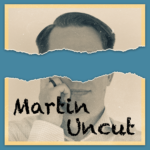
Todays episode will be about another book. I have just completed Mortimer J Adler and Charles Van Dorens’s classic, How to Read a Book. This will be a brief review about this pretty huge book.
As you may recall from previous episodes I try to read actively when I read. And during this process I take notes in my notebook about what I read. These notes later on go into my Zettlekasten and the literature notes there. But these notes are great while reviewing a book – especially bigger and more complex books that takes a while to complete.
I have for a long time wanted to improve my reading. Especially around the apprehension and long term use of my reading. In this quest I was looking around for various different ways of doing that. I found, among other things, a course by Ryan Holiday. It seemed pretty interesting but it was also fairly expensive. And all of a sudden I ran over the classic book by Mortimer J Adler and decided to read it instead.
The book divided into four main sections. The first section is an introduction to the art of reading in multiple chapters. We learn about the four different types, or level of reading; elementary reading, inspectional reading, analytical reading and syntopical reading. The authors main goal is to help the reader how to make books become good teachers by master these different types of reading.
Elementary reading is what we learn in school. The processes of interprete characters on a page to meanings and thoughts. It is assumed we already manage this level since we are reading this book. But there are some advices to become a faster reader. In this first part of the book the second level of reading is introduced – this is the inspectional reading. This is a method or a process to quickly get an understanding of a book, understand the structure and what it is about. After an inspectional read you should be able to understand if this is a book worth more of your time, time to do an analytical read.
The majority of the book will discuss analytical reading. The second section of the book will give you the understanding you need to handle it. This is when you read through the book actively. With a pen in your hand. Taking notes in the margin and making the book your own. During this process you ask a your self a couple of questions. You need find the answers to these questions as a mean of learning and analyzing the text.
The third section then describes how to read different types of text as an example; practical books, poems, history or mathematical books. Most of the books and types out there can be read analytical without any major changes from the general rules. But you may need to ask the questions differently to get the full understanding. The fourth and last section talk about syntopical reading. How you approach reading many or even a large number of books in the same domain or with related issues.
My main take aways from this book is that a lot of it is actually news. There are a lot of good advice for how to me and work with a book and I will try to incorporate the usage of these questions in my reading of books going forward. My process of doing an inspectional read before I do the analytical read is pretty close to what is suggested in the book – but I have not nearly been as thorough or careful while doing the analytical read.
I have not really done any syntopical reading in the past, even though I potentially have a syntopical reading project infront of me. The high level view of syntopical reading is essentially to do multiple inspectional reads to gain as much knowledge as possible and understanding of which books or sometimes which parts of the books are interesting enough to be read analytical.
During the whole book, but especially while talking about syntopical reading the author suggests that you should be objective. And also objectively report on the book. I think this is really hard or even impossible as a reader. You have previous knowledge and experience, bias, you use all of this prior experience while reading – and I would like to state that you cannot read at all without this experience. You need it to hang the discussion in the book on something. There for objectivity is really hard to achieve.
I also think that many people have a clear reason. An objective while reading a book. You are reading it to learn something, the understand a problem or simply get enjoyment. The author suggests that reading and analysis of that reading should be done just for the sake of it and that seems to be a bit strange.
Over all. It is a good book. It provides a lot of knowledge and learnings for how to become a better reader. Sometimes I find it a bit, “talky”, the content could probably have been communicated in a lot more condensed way. It is a practical book based on the authors opinion on how to read books – it is not really proven that this is the best or only way to do it. Thus the explanation or the “selling” could have been shorter.
This is one of the books that you “should” read. There are knowledge and ideas in here that will help you becoming a better reader. That is what the author set out to do — and they succeeded well with their task.
My next book on the reading list is “How to Take Smart Notes” by Sönke Ahrens. This and “How To Read a Book” are both practical books that will help you sharpen your tools. I really look forward to Ahrens book since I do have a Zettelkasten system and want to learn how to make it better.
After this one I will likely do a re-read of “Gott om tid” (Plenty of time) by Bodil Jönsson. This is a book I read a year ago. But I didn’t take any notes on it – and I think there are a lot of things in this that I want to reference in my Zettelkasten. Thus the rereading. It is a quick read so I do not mind.
- How to Read a Book by Mortimer J Adler and Charles Van Doren
- How to Take Smart Notes by Sönke Ahrens
- Gott om tid, Bodil Jönsson


